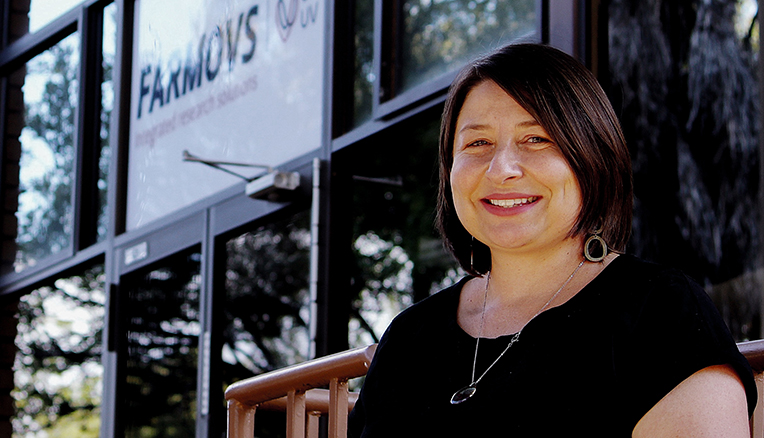While working on his study for his MSc Human Genetics degree, a staff member of
FARMOVS – who was a Gamete intrafallopian tube (GIFT) baby – not only got to meet the doctor who was responsible for his being, but the doctor also formed part of his supervisor team.
Hannes Erasmus, an assistant bioanalyst in the Division of Immunochemistry at FARMOVS, a wholly owned clinical research company of the University of the Free State (UFS), will be graduating on Thursday (22 April 2021) with a Master of Science degree majoring in Human Molecular Genetics. His dissertation is titled Genetic and Molecular Analysis of Male infertility in a private practice in South Africa. His supervisor team consisted of Mrs Sue-Rica Schneiders (supervisor), Dr Gerda Marx, Dr Olga de Smidt, and Prof PH (Paul) Wessels (co-supervisors).
“I feel very proud and fortunate to have the opportunity to complete this achievement. It was not easy, but it gave me more time during lockdown to write up my thesis. One of my biggest challenges was time itself. Late nights in the lab and writing up at night,” says Erasmus about studying and working during the year of COVID-19.
GIFT baby
According to Erasmus, he decided on this topic because he had an interest in infertility from an early age, since he was also a GIFT baby.
“My parents struggled for a while to conceive after my older sister was born. They decided on this assisted reproductive technique, and I was conceived. I then had the privilege to meet the doctor who was responsible for my being, Prof Wessels. He then also formed part of my supervisor team and allowed me to sample my case group at his private fertility clinic.”
His wife, Bernadine, inspires him to be a better version of himself each day. He strives to contribute to his workspace, his friends, family, and community to grow and better the future of South Africa and our children.
Dean’s Medal
A colleague of Erasmus – Vicky Simpson, Marketing Manager of FARMOVS, is the recipient of the Dean’s Medal for achieving the best results in respect of a Bachelor Honours degree in the Faculty of Economic and Management Sciences at the UFS.
Simpson, who graduated with a Bachelor of Commerce Honours with specialisation in Marketing during the virtual graduation on Monday, says she is shocked and at first did not notice that she was the recipient of this award. She obtained her degree with distinction.
“I will always be grateful! Not everyone gets the opportunity to study at a university. Yes, I had to work twice as hard to achieve my goals, but I think I craved success enough to overcome all the challenges.”

Vicky Simpson, Marketing Manager of FARMOVS,Picture: André Damons
Grabbed the opportunity with both hands
“I never had the opportunity to study before the age of 30. My family had very limited financial resources. As a result, my main focus was day-to-day survival. So, I had to find creative ways to make this dream happen. When the doors of opportunity opened here at the UFS, I grabbed it with both hands and made the best of numerous challenging situations. It meant that I had to study and perform well at work, because both aspects deserved my full attention. In the end, I don’t regret the sacrifices I made. I also hope that I made those who believed in my potential very proud,” says Simpson.
“I will always remain grateful to Prof Jonathan Jansen, former Rector and Vice-Chancellor of the UFS, and his wife Grace. They gave me a valuable opportunity back in 2014, which transformed my life. My colleague Pat Lamusse also played a significant role in my development, because she believed in me when it mattered the most.”
According to Simpson, it was difficult to stay motivated and focused (during COVID-19) while the world was in a state of turmoil and uncertainty. It required more energy than it would have under normal circumstances.
“Luckily, my partner Cornél, my friends, colleagues, and family were there to offer me support. I felt like quitting a few times, but grit and vision pushed me forward towards my goal. My amazing study leader, Prof Jacques Nel, was just so inspiring and helpful. We made a stellar team, and my dissertation remains the best document that I have ever submitted. The weekends and late nights spent on writing that document was worth it!”